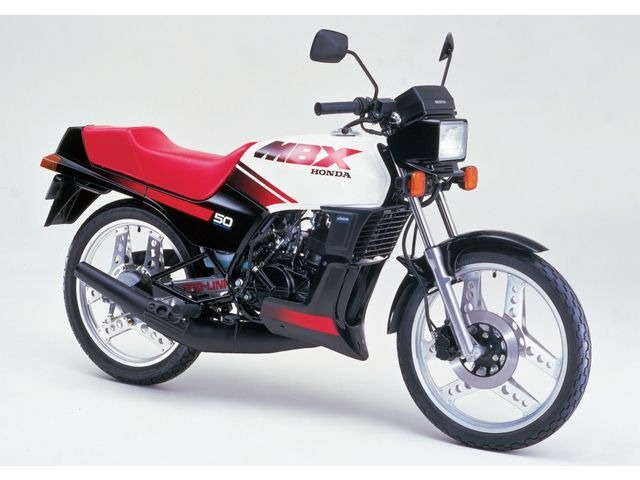A Tale of Two Cities - Honda MBX 50 and MB5
This article explores the Honda MBX 50 and MB5, two small-displacement motorcycles from the 1980s. The MBX 50 was sporty and ideal for urban commuting, while the MB5 had a more standard design for practical daily use. Both bikes had a 50 cc two-stroke engine and left a lasting legacy in motorcycle history.
MOTORCYCLES 1980'SHONDA JAPAN TWO STROKE
11/17/20233 min read


A Tale of Two Classics - Honda MBX 50 and MB5
Introduction:
Embarking on a journey through the annals of motorcycle history, we find ourselves in the vibrant era of the 1980s, where Honda's small-displacement marvels, the MBX 50 and MB5, took center stage. In this comprehensive exploration, we'll unravel the stories behind these iconic machines, each a unique testament to Honda's commitment to diverse rider preferences.
Honda MBX 50: Where Sporty Meets Commute Bliss
Born in the early 1980s, the Honda MBX 50 emerged as a dynamic force in the world of compact motorcycles. Sporting a spirited 49 cc two-stroke engine, a manual transmission, and a design that echoed the sporty zeitgeist of its time, the MBX 50 became the go-to choice for riders seeking an exhilarating yet practical urban commuting experience.
Design and Styling:
Picture the sleek silhouette of the MBX 50 slicing through city streets. Its aerodynamic profile and stylish fairings were a nod to the larger sport bikes of the era, encapsulating the essence of speed and agility in a compact frame. Maneuverability was the name of the game, making it the perfect companion for navigating the bustling urban landscape.
Performance:
Don't let the modest 49 cc engine fool you – the MBX 50 delivered a punchy performance that left riders grinning. The two-stroke engine, though a rarity today, added a unique flavor to its power delivery. Lightweight and nimble, this pocket-sized powerhouse proved that dynamite indeed comes in small packages, earning its stripes in the hearts of enthusiasts.
Legacy:
As time marched on, the MBX 50 etched its name in the chronicles of motorcycle history. While it may not have garnered the same spotlight as some of Honda's larger models, its sporty design and reliable performance have bestowed upon it a timeless legacy, appreciated by those who reveled in the thrill of its ride.
Honda MB5: The Standard with a Twist
Side by side with the MBX 50, Honda introduced the MB5, a small-displacement gem with a different flavor. Embracing the standard motorcycle aesthetic, the MB5 catered to riders seeking simplicity and versatility. With its 50 cc two-stroke engine and a more upright riding position, it provided a reliable and practical option for daily commuting.
Design and Styling:
The MB5 took a more straightforward approach to design, embracing the classic lines of a standard motorcycle. Its single-seat setup and minimalist styling conveyed a sense of practicality and simplicity. Exposed frame and all, it exuded a charm that resonated with riders valuing function over flash.
Performance:
Underneath the unassuming exterior, the MB5 shared the same 50 cc two-stroke engine as its sportier sibling. While the performance was modest, it offered a reliable and efficient ride for those seeking a more laid-back experience. The standard riding position and lightweight build made it an easygoing companion for daily journeys.
Legacy:
In its own right, the MB5 found its niche as a reliable and practical small motorcycle. It showcased Honda's ability to cater to diverse rider preferences, offering an alternative to those who valued straightforward functionality over the sporty aesthetics of the MBX 50.
Comparative Overview: MBX 50 vs. MB5
As we stand back and compare these two classics, it's clear that the MBX 50 and MB5, though sharing a 50 cc two-stroke engine and compact size, catered to different tastes. The MBX 50 targeted riders seeking a sportier, more aggressive experience, with its dynamic styling and sleek fairings. In contrast, the MB5 appealed to those desiring a standard-style motorcycle, prioritizing simplicity and versatility over flashy design.
In retrospect, these two models showcase the versatility of Honda's lineup in the 1980s, offering options that spoke to a broad spectrum of riders with varied preferences and needs.
Conclusion: Riding Into Nostalgia on Small Displacement Legends
As the curtain falls on our exploration of the Honda MBX 50 and MB5, these classics stand tall as symbols of an era where small-displacement motorcycles captured the hearts of riders worldwide. Whether you were drawn to the sporty allure of the MBX 50 or the practicality of the MB5, both these machines evoke a sense of nostalgia for enthusiasts who reveled in the joy of navigating the streets on these timeless wonders. In the grand tapestry of motorcycle history, the MBX 50 and MB5 remain vibrant threads, forever weaving the story of Honda's small-displacement legacy.
